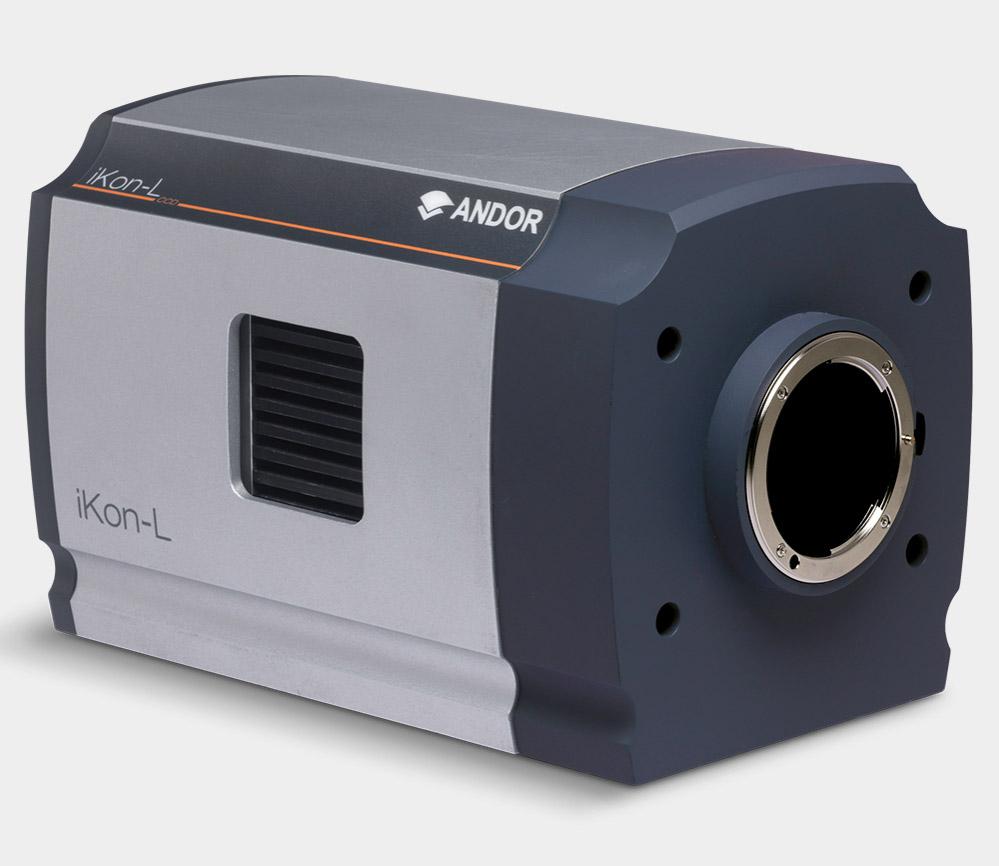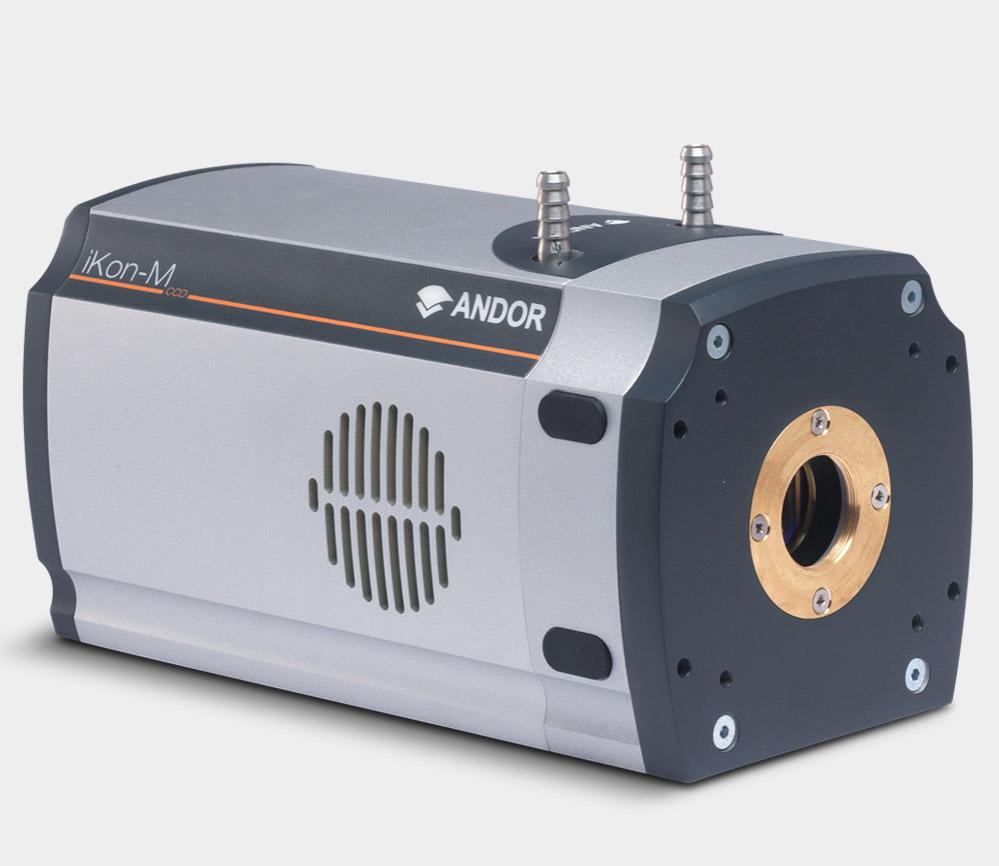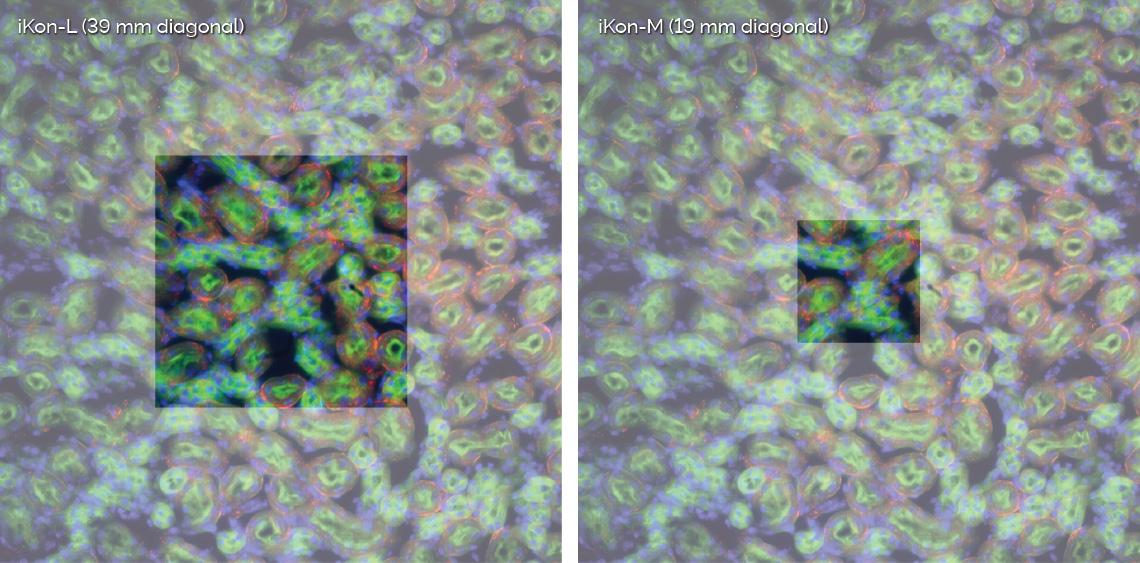Resources
 Part of the Oxford Instruments Group
Part of the Oxford Instruments Group
Expand
Collapse
The iKon ‘slow scan’ CCD camera series features unique thermoelectric cooling to -100°C for industry-leading low noise performance coupled with highly efficient back-illuminated photon collection across a broad spectral range, and exceptional dynamic range. The iKon series is aimed at applications such as plant imaging or in vivo luminescence experiments that require exposure durations of minutes, or even hours.
Andor offer a portfolio of deep cooled, back-illuminated CCD cameras, spanning a range of field of view requirements and offering optimized response across a very broad spectral range.


The UltraVac™ permanent vacuum enclosure of the iKon series is particularly relevant to the needs of long exposure experiments, where cameras need not only need the lowest possible thermal noise but tight thermal control over extended durations. Furthermore, thermoelectric cooling down to -100 °C, even for very large area sensors, circumvents the need to utilize liquid nitrogen or unreliable compressed gas coolers in order to minimize camera darkcurrent.
| Model | iKon-L 936 | iKon-M 934 |
| Sensor Format | 2048 x 2048 | 1024 x 1024 |
| Sensor Diagonal (mm) | 39 | 18.8 |
| Pixel Size (µm) | 13.5 | 13 |
| QE max (%) | 95 | 95 |
| QE Profile Options | BV, BU2, BR-DD, BEX2-DD, FI | BV, BU2, BR-DD, BEX2-DD, FI |
| Cooling (°C) | -100 | -100 |
| Darkcurrent (e-/pix/sec) | 0.000059 | 0.00012 |
| Read Noise (rms e-) | 2.9 | 2.9 |
| Pixel Well Depth (e-) | 150,000 | 130,000 |
| Digitization | 16-bit | 16-bit |
| Readout Rates (MHz) | 0.05, 1, 3, 5 | 0.05, 1, 3, 5 |
| Readout Ports | 1 | 1 |
| Fastest Full Image Readout Time (sec) | 1.05 | 0.23 |
| Timestamp | TTL | TTL |
| Interface | USB 2.0 | USB 2.0 |
| Learn More | Specifications | Specifications |
| Request Pricing | Request Pricing | Request Pricing |
All iKon models offer a complimentary combination of technologies that ensure maximum Signal to Noise ratio under very low light signal conditions.

Quantum efficiency versus wavelength of the standard Silicon (‘BV’) and deep depletion (‘BR-DD’ and ‘BEX2-DD’) iKon-L sensor options. By extending QE response into the NIR it allows more potential for multi-parametric luminescence and fluorescence imaging for multi-reporters systems and for better compatibility with deeper tissues for in vivo studies.
The iKon-M features a 19 mm diagonal which maximises field of view from the popular C-mount format. An even larger 39 mm field of view is possible from the iKon-L that uses a 4.2 Megapixel sensor and F-mount. Extension tubes sets are available to adjust the focal distance.

Note when a large field of view is required for faster photometric or fluorescence experiments (ranging from milliseconds to tens of seconds) we recommend checking the Sona back-illuminated sCMOS and iXon Ultra and Life 888 EMCCD models.